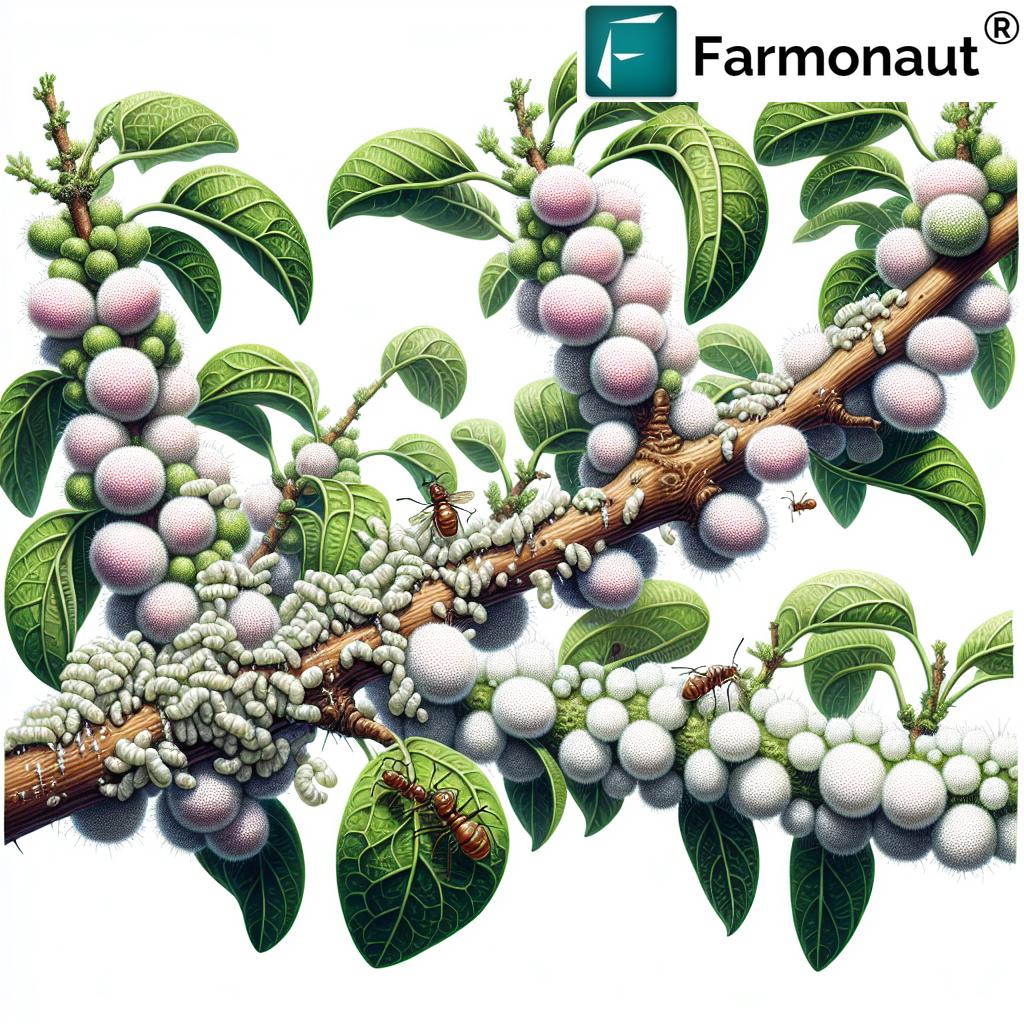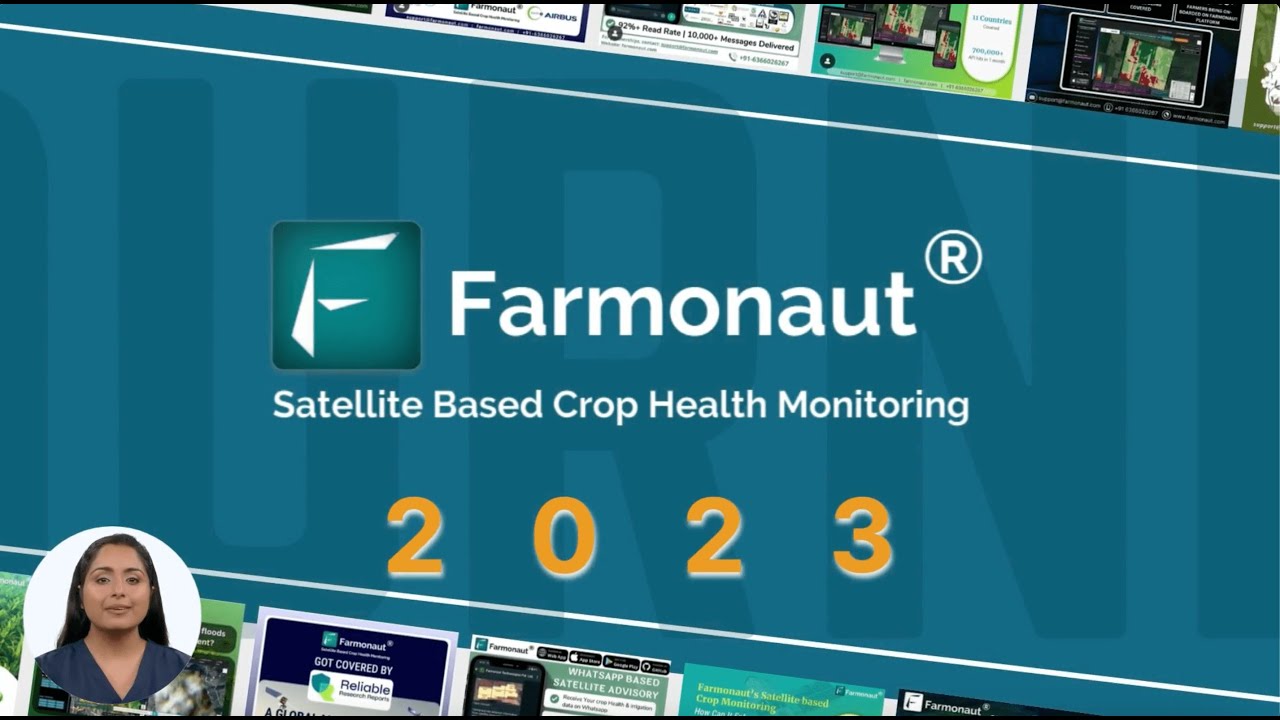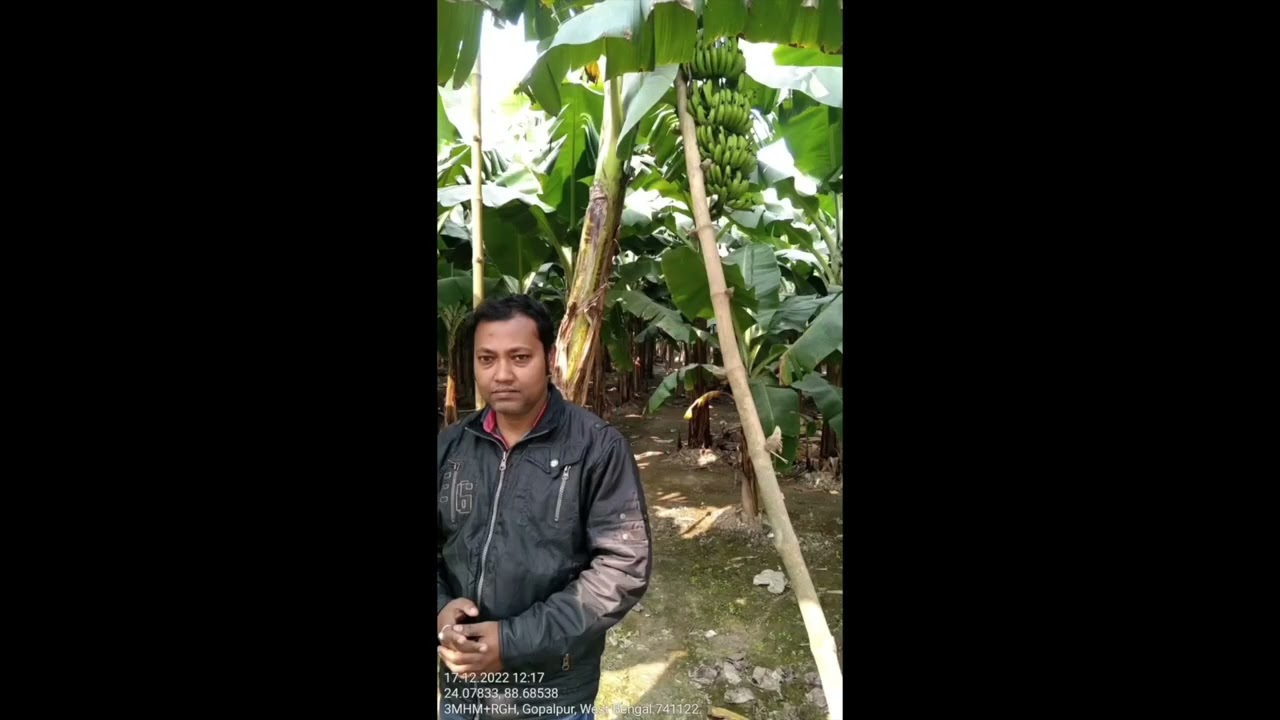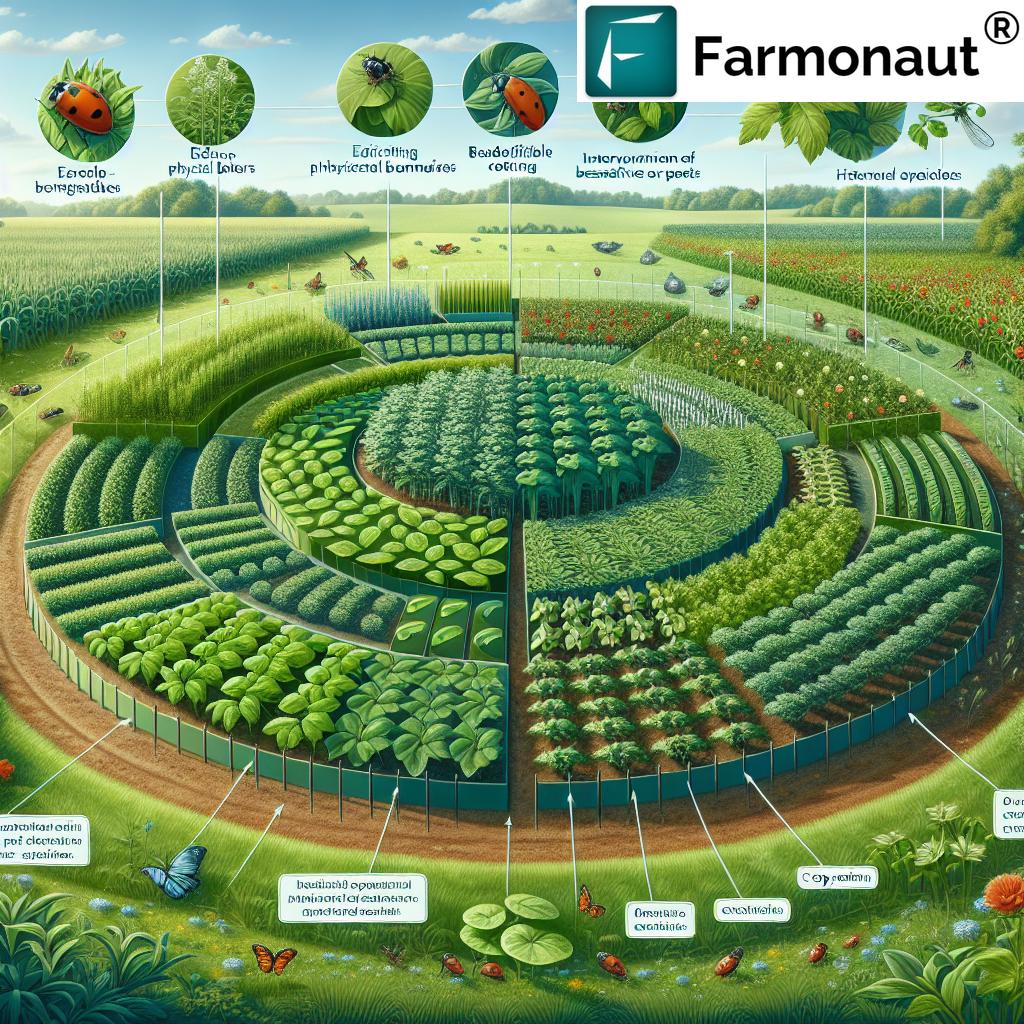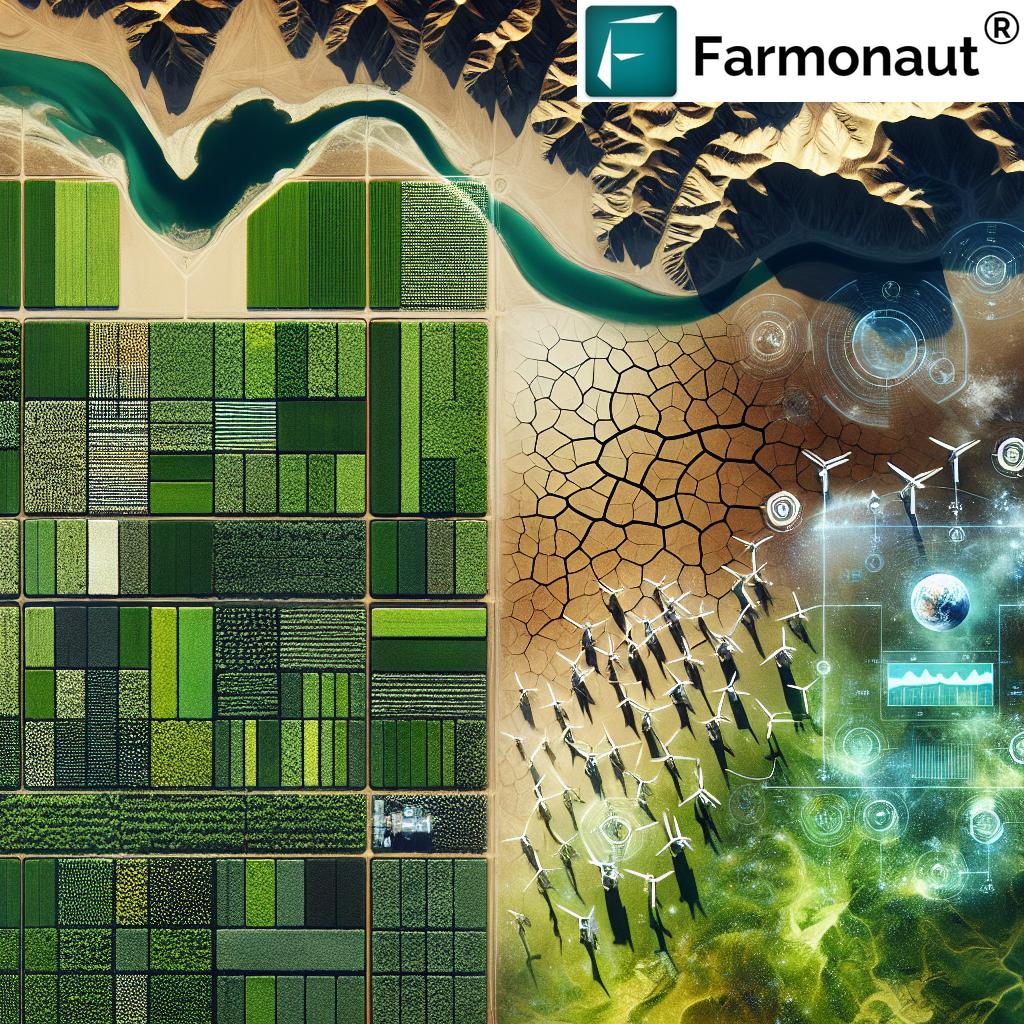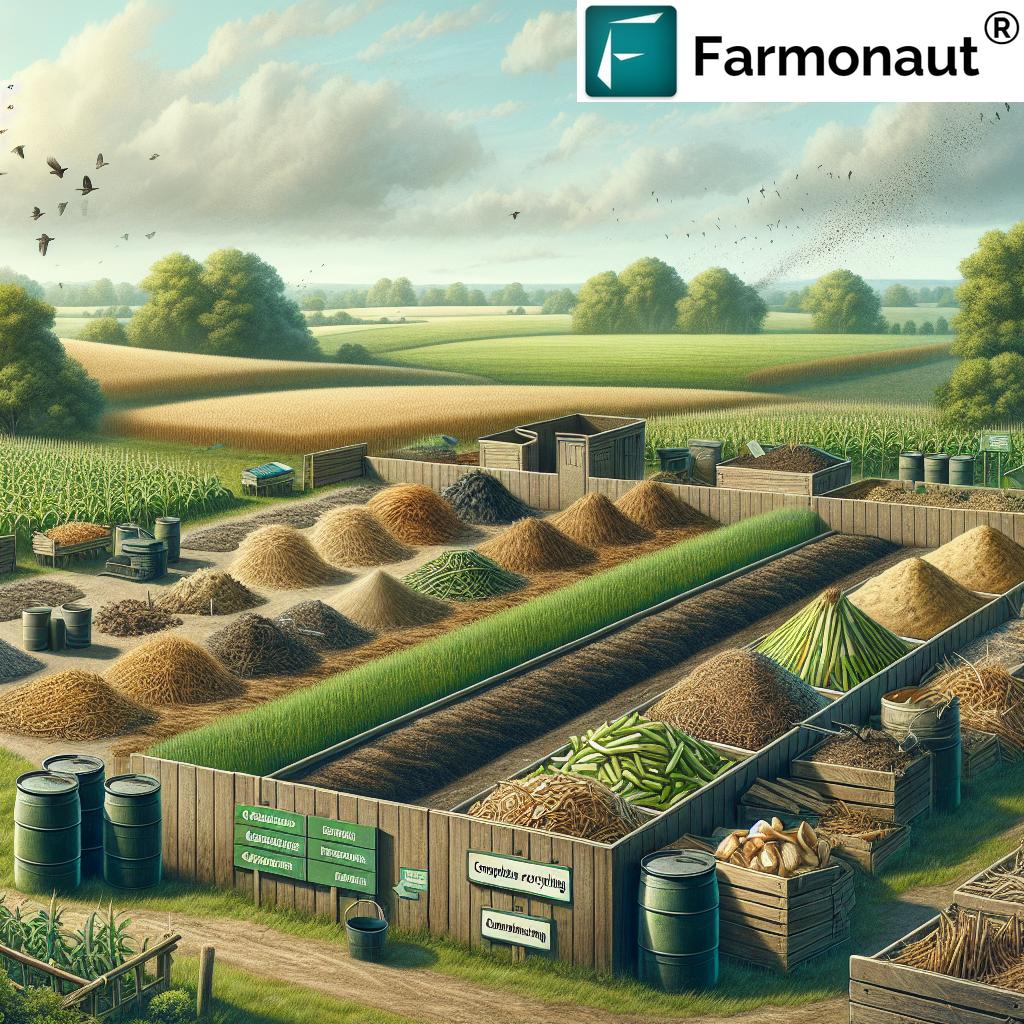Mealybug Pests: 7 Powerful Strategies for Effective Control
- Summary & Introduction
- Trivia Fact #1
- Comprehensive Overview
- Mealybug Biology & Identification
- Feeding Habits & Plant Damage
- 7 Powerful Mealybug Control Strategies
- Comparison Table of Mealybug Control Strategies
- Modern Farm Management with Farmonaut
- FAQs about Mealybug Control
- Conclusion
Summary: Mealybug Pests in Agriculture, Farming, and Forestry—An In-Depth Overview
Mealybugs are among the most destructive pests affecting a multitude of agricultural crops, ornamental plants, and forestry species. Belonging to the family Pseudococcidae, these soft-bodied, segmented insects are notorious for their sap-feeding habits and their ability to transmit damaging plant diseases. Effective mealybug control in agriculture requires a deep understanding of their biology, feeding behavior, and the various integrated management strategies that can be used to reduce their impact and protect crop vigour and yield. In this guide, we delve into mealybug management strategies, emphasizing sustainable, problem-solving solutions suitable for modern farming, including the roles of biological, cultural, chemical, and integrated pest management (IPM) approaches.
Comprehensive Overview: Mealybugs as Problem Pests in Agriculture & Forestry
As we advance towards sustainable agriculture and precision farming, mealybug pests have emerged as significant threats not just for farming, but also in forestry and management of high-value ornamental plants. With over 2,000 species described in the family Pseudococcidae, mealybugs are highly adaptable, mobile pests—capable of infesting new regions, including fruit crops, vineyards, greenhouses, and commercial plantations. Their feeding habits undermine plant health, stunt growth, promote mold (especially sooty mold), and even lead to the transmission of plant viruses.
Understanding mealybug biology, feeding modes, and the most effective, integrated management strategies allows us to develop proactive, lasting solutions for their control. Mealybug identification and early monitoring are fundamental to every IPM approach.
Mealybug Biology and Identification
For successful mealybug control in agriculture, early and accurate identification plays a crucial role. Let’s break down the biology of mealybugs for practical field detection and monitoring:
- Appearance: Adult female mealybugs are 3–5 mm long, soft-bodied, oval-shaped insects with a distinctive white, waxy powder covering their bodies, often making them look “frosted.” Waxy filaments may fringe the body margin, and some species form tail-like filaments.
- Male Mealybugs: Much smaller, winged, and transient. Males lack functional mouthparts and do not feed; their role is to fertilize females only.
- Development: Females reproduce by laying eggs (usually in white, cottony egg sacs) or directly giving birth to live young. The nymph stage (crawlers) is highly mobile and responsible for pest dispersal across crops, spreading infestations quickly.
- Habitat: Mealybugs hide in protected plant parts: leaf axils, under bark, stems, roots (of some species), and beneath loose bark or fruit stems.
Identification Tips:
- Look for sticky, waxy clusters along stems, leaf joints, and under leaves.
- Presence of ants may indicate hidden mealybug colonies (since ants harvest honeydew from mealybugs).
- Check for black, velvety sooty mold (grows on honeydew excreted by mealybugs).
This biology and identification foundation is essential for all further mealybug management strategies.
Mealybug Feeding Habits and Plant Damage
Mealybugs pose a dual threat to plants—direct damage through feeding and indirect harm via increased risk of disease transmission and secondary infestations. Here’s what we need to watch for:
- Sap Extraction: Using needle-like mouthparts, mealybugs pierce plant tissues to extract sap, robbing the plant of essential nutrients and water. This leads to reduced plant vigor and stunted growth.
- Fruit and Flower Drop: Feeding on fruit stems or flower stalks often causes premature fruit and flower drop, significantly reducing crop yields.
- Sooty Mold: Mealybugs excrete large quantities of sugary honeydew that encourages the growth of sooty mold. This black, sticky fungus can cover entire leaves, impeding photosynthesis and reducing the aesthetic (and market) value of fruits and ornamental plants.
- Disease Transmission: Several mealybug species act as vectors, transmitting viral and bacterial pathogens as they feed on multiple host plants. The transmission of disease amplifies the impact of infestations and complicates control efforts.
Mealybug damage to plants is particularly severe for fruit crops (grapes, citrus, mango, pineapple, banana), sugarcane, cotton, and high-value ornamentals—making proactive management indispensable.
7 Powerful Strategies for Effective Control of Mealybug Pests
To achieve robust, lasting mealybug management, we must combine diverse tactics based on biological understanding, field monitoring, and the local agricultural ecosystem. Here’s our problem-solving roadmap—using the best mealybug control in agriculture for healthier plants and improved yields.
1. Effective Monitoring & Early Detection
Regular, systematic scouting is the foundation of all mealybug management strategies. Early detection enables us to intervene before populations explode and spread across crops. Here’s how to get proactive:
- Visually inspect crop hotspots (leaf axils, under bark, along stems, fruit clusters), especially during warm, dry spells.
- Use magnifying lenses to check for crawlers and egg sacs.
- Monitor the presence of ants, sticky honeydew, and appearance of sooty mold.
- Utilize digital tools: Satellite-powered monitoring like Farmonaut’s Crop Health Platform offers real-time alerting to unusual crop stress that may suggest early pest activity, including mealybugs.
Benefits:
- Helps pinpoint initial outbreaks before they get out of hand.
- Reduces reliance on broad-spectrum insecticides and cuts management costs.
- Enables tailored intervention (spot treatment) reduces environmental impact.
2. Cultural Control & Sanitation Practices
Rigorous cultural practices and sanitation sharply reduce the habitat and reproductive opportunities for mealybugs, especially in high-value horticulture, orchards, and nursery settings. Our actionable recommendations:
- Remove Plant Debris & Weeds: Clear away plant debris and crop residues where mealybugs and their crawlers can hide or overwinter.
- Prune Infested Parts: Regular pruning to eliminate infested branches, stems, and leaves. Destroy infested material away from production areas.
- Control Borders: Remove weeds and alternative host plants along field edges and fencerows.
- Disinfect Tools & Equipment: Clean and sanitize pruning tools to prevent pest spread between plants.
- Disallow Entry of Infected Plants: In nurseries, carefully inspect and quarantine new plant material before introduction.
Implementing thorough sanitation creates an unfavorable environment for mealybugs, decreasing the likelihood of rapid population buildup and supporting other control methods.
3. Ant Control Measures: Disrupting Mutualism
In agricultural and forestry settings, controlling ant populations is pivotal to mealybug management. Ants farm mealybugs for honeydew—vigorously defending them from natural enemies (predators/parasitoids), thus worsening infestations.
- Utilize ant baits and barriers to restrict ant movement in the crop canopy and around trunks.
- Apply sticky bands or physical barriers (like tree wraps) on trees and vine trunks to deter ant access.
- Destroy nearby ant nests—eliminating their primary base of operation.
- Avoid indiscriminate use of broad-spectrum insecticides for ant control (as they may impact beneficial insects).
Outcome:
- Disrupts the ant-mealybug symbiosis, reducing mealybug populations more efficiently—especially when paired with biological control of mealybugs.
4. Biological Control of Mealybugs: Harnessing Natural Predators
Harnessing the natural predators of mealybugs forms the core of sustainable pest management. Encouraging or introducing beneficial insects boosts ecosystem resilience and helps minimize pest resurgence.
- Mealybug Destroyer (Cryptolaemus montrouzieri): A voracious ladybird beetle, both larvae and adults consume mealybugs at all life stages, especially effective against heavy wax-producing species and in greenhouses or protected crops.
- Green Lacewings (Chrysopidae): Larvae prey on mealybug crawlers, nymphs, and eggs.
- Syrphid Fly Larvae: Also known as hoverflies—these are efficient mealybug predators, especially on leaf undersides and tight plant clusters.
Tip: Reduce chemical insecticide use, especially when natural enemy populations are establishing. Choose selective, non-toxic alternatives if intervention is needed.
Read more about Farmonaut Crop Plantation & Forest Advisory to integrate remote sensing and timely pest alerts in integrated pest management for mealybugs.
5. Biological Control: Targeted Use of Parasitoids
Parasitoid wasps have been deployed globally to suppress severe mealybug infestations. Key species include:
- Leptomastix dactylopii: Specializes in parasitizing the citrus mealybug (Planococcus citri), common in fruit orchards and greenhouses.
- Anagyrus sp.: These wasps successfully parasitize and reduce several key mealybug pests in horticultural, field, and nursery crops.
To use parasitoids effectively:
- Source from specialized biocontrol producers for local releases.
- Monitor environmental conditions; parasitoids are most successful without insecticide disruption and where ant activity is suppressed.
- Combine with other biological control of mealybugs for comprehensive pest suppression.
Adopting biological control strategies is both environmentally friendly and cost-effective for long-term mealybug control in agriculture.
6. Responsible Chemical Control of Mealybugs
Despite our focus on holistic management, there are situations where judicious chemical control of mealybugs may be warranted—especially for severe outbreaks threatening high-value fruit or export crops.
- Choose Selective Insecticides: Prioritize systemic formulations and selective contact insecticides proven effective against mealybugs (such as certain neonicotinoids, insect growth regulators).
- Wax Barrier Challenge: Mealybugs’ waxy coating makes them highly resistant to many conventional sprays. Consider mix-application with penetration enhancers (oils, soaps) to improve efficacy.
- Timing: Target crawlers and early nymph stages when populations are most vulnerable.
- Rotate Chemistry: Use different modes of action to minimize insecticide resistance.
- Avoid Harm to Beneficials: Apply spot treatments; avoid calendar or blanket sprays to preserve beneficial predators and parasitoids.
Whenever possible, integrate chemical interventions with broad IPM for sustainable, long-lasting results while safeguarding pollinators and natural enemies.
For automated advice on insecticide selection and timing, try Farmonaut’s Jeevn AI-Based Advisory System—an AI tool integrating weather and remote crop health for optimal pest response.
Important Compliance: Strictly follow prevailing local regulations, crop protection labels, and pre-harvest intervals for food and export crops. Do not overapply or misuse chemicals.
7. Integrated Pest Management (IPM) for Mealybug Control in Agriculture
The gold standard in mealybug management strategies is an integrated, multi-pronged approach.
Integrated pest management for mealybugs merges all the above practices in a flexible, responsive, and environmentally conscious package.
- Regular Monitoring & Threshold-Based Action: Only intervene when population thresholds are reached—reducing unnecessary spending, chemical use, and crop stress.
- Combination Approach: Combine the best of cultural, biological, chemical, and regulatory controls customized to the local crops, climate, and pest pressures.
- Data-Driven Decisions: Leverage digital platforms like Farmonaut for real-time satellite health indices, pest hot-spot alerts, and field-level pest trend analytics.
Through robust record-keeping and the adoption of advanced remote sensing solutions, IPM empowers growers to address mealybugs at the right time, using the right method, for the right results.
See also: Farmonaut Large Scale Farm Management Platform for precision farming, resource allocation, and timely pest risk alerts.
Comparison Table of Mealybug Control Strategies
| Strategy Name | Mode of Action | Effectiveness (% Infestation Reduction) | Application Frequency (times/season) |
Estimated Cost (USD/hectare) |
Environmental Impact |
|---|---|---|---|---|---|
| Monitoring & Early Detection | Field scouting; remote sensing; digital alerts | Up to 30%* | 2–4+ | $8–25 | Low |
| Cultural Control & Sanitation | Removal of debris, weeds, infested parts | 25–40% | 2–3 | $20–50 | Low |
| Ant Control | Baiting, barriers, nest elimination | 15–35% | 1–3 | $10–40 | Low to Medium |
| Biological Control (Predators) | Release/encourage ladybirds, lacewings | 40–70% | 1–2 | $35–90 | Low |
| Biological Control (Parasitoids) | Release/encourage parasitic wasps | 30–60% | 1–2 | $55–110 | Low |
| Chemical Control | Systemic/contact insecticides | 60–90% | 1–4 | $65–200 | Medium to High |
| Integrated Pest Management (IPM) | Strategic combination of all methods | 85–95% | Continuous/adaptive | $90–190 | Low |
*When used with digital crop monitoring platforms (like Farmonaut), early warning and spot-treatments can further increase efficiency and reduce crop losses.
Modern Farm Management with Farmonaut’s Advanced Technology
In the digital age, effective mealybug control in agriculture benefits immensely from precision technology and data-driven management platforms. Farmonaut is a leading agricultural technology provider making these innovations widely affordable and accessible for all farm sizes.
- Satellite-Based Crop Health Monitoring: Provides early stress signals for pest outbreaks, including mealybugs, through NDVI and other indices, allowing for precision scouting and targeted intervention.
- AI-Powered Jeevn Advisory: Delivers real-time, crop-specific pest management recommendations—integrating local weather, satellite data, and AI insights for smarter pest management decisions.
- Blockchain-Based Product Traceability: Product Traceability ensures transparency from farm to fork, increasing market and consumer confidence, and helping with regulatory compliance where pest resilience is required.
- Fleet Management & Large-scale Operations: Keep all farm machinery and field operations optimized using Fleet Management tools for coordinated pest response and efficient spraying or field operations.
- Crop Loan & Insurance Verification: Crop Loan and Insurance modules enable banks and insurers to verify claims using historical satellite data, decreasing fraud and improving access to credit and coverage—vital after pest outbreaks.
- Carbon Footprint Tracking: Carbon Footprinting optimizes input use, reduces emissions, and helps meet sustainability goals even as pest management challenges increase.
All of Farmonaut’s services are available via Android, iOS, web/browser Apps and powerful APIs for integration into any farm or business workflow.
Subscription Options:
Ready to upgrade your farm management for powerful, real-time mealybug and pest control? Try Farmonaut now!
Frequently Asked Questions about Mealybug Control
1. What are mealybugs and why are they dangerous for crops?
Mealybugs are soft-bodied, wax-coated insects in the family Pseudococcidae. Their feeding habit—piercing plant tissues to extract sap—weakens plants, stunts growth, causes flower and fruit drop, encourages sooty mold, and makes crops more vulnerable to plant diseases transmitted during feeding. Their rapid reproduction and difficulty of detection make them a persistent pest problem in agriculture, horticulture, and forestry.
2. How do mealybugs spread from plant to plant?
Mealybugs lay eggs or bear live young known as “crawlers”—these are highly mobile and disperse readily via plant-to-plant contact, tools, wind, irrigation water, or by hitchhiking on ants. Crawlers are often the first sign of an emerging infestation.
3. What’s the best natural way to get rid of mealybugs?
The best natural and sustainable solution is to encourage or release natural predators (like Cryptolaemus montrouzieri ladybird beetles and lacewings) and use sanitation measures (removing infested plant parts, debris, and controlling ants). Pairing these with regular monitoring increases effectiveness and reduces reliance on chemicals.
4. Why is chemical control alone not effective for mealybug management?
Mealybugs have a protective waxy covering that makes them resistant to many insecticides. Overuse of chemicals kills beneficial insects, enables mealybug resurgence, and may lead to resistance. An integrated pest management (IPM) approach is essential—combining spot chemical applications with cultural, biological, and monitoring strategies for reliable results.
5. How can digital agriculture technology help in controlling mealybugs?
Platforms like Farmonaut utilize satellite imagery, real-time crop health indices (NDVI), and AI-based insights to detect early plant stress, direct field scouting to emerging pest hot spots, and optimize intervention timing and efficacy—significantly enhancing traditional pest management and saving resources.
6. How do I prevent mealybug infestations from recurring?
Continue regular monitoring, practice thorough sanitation, keep ant populations under control, encourage beneficial predator insects, and apply the principles of integrated pest management year-round. Digital data-driven tools like Farmonaut help in maintaining consistency and effectiveness season after season.
Conclusion: Sustainable, Effective Control for Healthier, More Productive Farms
Mealybugs present significant challenges for agriculture, horticulture, and forestry globally due to their feeding damage, disruptive ecology, and role as vectors for devastating plant diseases. However, by combining rigorous monitoring, strong cultural practices, enhancement of biological control (natural predators and parasitoids), responsible chemical interventions, and advanced digital solutions, we can reduce mealybug populations to below damaging thresholds.
The integrated pest management approach—especially when augmented with real-time field data and satellite insights from platforms like Farmonaut—delivers the most resilient, cost-effective, and environmentally responsible solution for mealybug control in agriculture. Adopt these strategies to promote healthy, productive, and sustainable agriculture.
Ready to safeguard your crops, protect your livelihood, and harness the power of data-driven farming? Start using Farmonaut’s platform and experience the difference in integrated mealybug management!





